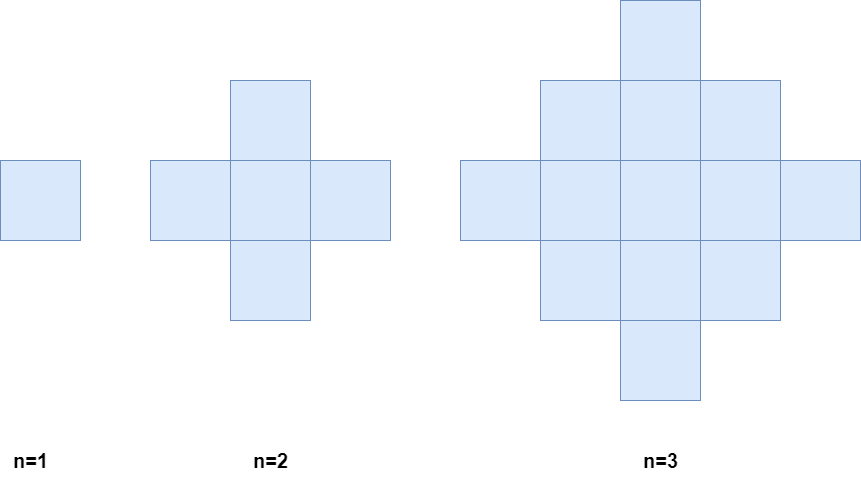2579. Count Total Number of Colored Cells #1393
-
Beta Was this translation helpful? Give feedback.
Replies: 1 comment 2 replies
-
|
We need to determine the number of colored cells in an infinitely large two-dimensional grid after ApproachThe key observation here is that the number of colored cells follows a specific pattern. Let's analyze the expansion of colored cells over time:
By examining the pattern, we notice that each subsequent minute adds a new layer of cells around the existing colored cells. The number of cells added each minute forms an arithmetic sequence. Specifically, the number of cells added at the The formula derived from this pattern is: This formula efficiently computes the result in constant time O(1), making it suitable even for large values of Let's implement this solution in PHP: 2579. Count Total Number of Colored Cells <?php
/**
* @param Integer $n
* @return Integer
*/
function coloredCells($n) {
return 2 * $n * $n - 2 * $n + 1;
}
// Example usage
echo coloredCells(1); // Output: 1
echo coloredCells(2); // Output: 5
echo coloredCells(3); // Output: 13
?>Explanation:
This approach ensures that we efficiently compute the result without iterating through each minute, making it both time and space efficient. |
Beta Was this translation helpful? Give feedback.

We need to determine the number of colored cells in an infinitely large two-dimensional grid after
nminutes, where each minute colors all uncolored cells adjacent to already colored cells.Approach
The key observation here is that the number of colored cells follows a specific pattern. Let's analyze the expansion of colored cells over time:
n = 1, there is 1 colored cell.n = 2, the initial cell plus its four immediate neighbors (up, down, left, right) form a 3x3 square, resulting in 5 colored cells.n = 3, the colored cells expand further outward, forming a diamond shape with an additional layer of cells around the previous square.By examining the pattern, we notice that eac…